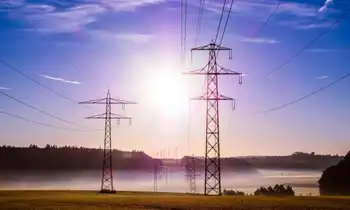Wind power sails on despite local buffeting
By Globe and Mail
Substation Relay Protection Training
Our customized live online or in‑person group training can be delivered to your staff at your location.

- Live Online
- 12 hours Instructor-led
- Group Training Available
Wind power capacity jumped 21 per cent around the world last year, according to figures released by the Global Wind Energy Council GWEC, a Brussels-based organization that promotes the industry.
In Canada, the increase was even more impressive, as capacity leapt more than 30 per cent. There are now turbines capable of generating 5,265 megawatts across the country, enough power for about 2.3 per cent of CanadaÂ’s electricity requirements.
The boost in output comes as Ontario and other jurisdictions across Canada face vocal opposition from groups that say wind turbines are defacing rural landscapes and that potential health issues are not sufficiently understood.
Canada is ninth in the world for wind power production, a ranking unchanged from a year earlier. China remains by far the largest wind power producer – it makes up more than a quarter of the world market, with a capacity of 62,733 megawatts. The United States is second with about 47,000 MW, and Germany is third at around 29,000 MW.
China is also growing at the fastest pace, having added 18,000 MW of wind power in the past year.
GWEC secretary general Steve Sawyer said wind installations are also growing quickly in new markets in Africa, Asia and Latin America. He said growth rates will not be maintained, however, “unless there is a global price on carbon, which would force greenhouse gas-emitting forms of power to pay penalties, and give credits to green power producers.”
Canadian Wind Energy Association president Robert Hornung said Canada needs aggressive targets for wind energy development, and a “stable policy framework.”
Still, in 2011 more than 1,200 MW of wind capacity was added across Canada. In 2012, CanWEA predicts another 1,500 MW will be added in Quebec, Ontario, Alberta, British Columbia, P.E.I. and Nova Scotia.
Ontario – Canada’s largest market for wind power – is reviewing its policies supporting renewable energy. The province is expected to make some changes soon to its electricity pricing structure, likely reducing some of the subsidies for wind, solar and other green energy production.
Last month, the Ontario Federation of Agriculture, the largest farm organization in the province, called for a moratorium on wind power development. The OFA said there are too many unanswered questions about the value and impact of wind power, municipalities have been unfairly cut out of the decision-making process, and the debate over turbines is polarizing rural communities.
Jane Wilson, president of anti-wind lobby group Wind Concerns Ontario, acknowledged that “in the short term, certainly, there is a major push to get more projects approved and built.” However, she added, more and more individuals and groups are “saying this is all happening way too fast … let’s put the brakes on.”
The opposition is not confined to Canada. Last week, more than 100 British members of parliament wrote to Prime Minister David Cameron calling for a sharp cut to subsidies for on-shore wind, which they said is “inefficient and intermittent.” They asked that the money go to other forms of renewable energy as well as energy efficiency programs.
The MPs also complained that the approvals process makes it too hard for local residents to defeat unwanted wind farm proposals.











